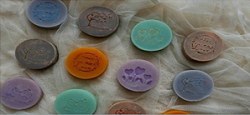Pendampingan Proses Produksi Sabun Natural Mayangsari di Kelompok Bumdes Desa Pesanggrahan Kota Batu Assistance for Mayangsari Natural Soap Production Process in Village-Owned Enterprises Pesanggrahan Village, Batu City
Main Article Content
Abstract
Natural soap is a soap with basic ingredients using herbal ingredients such as olive oil, coconut oil, and milk. MayangSari natural soap is produced by a joint business group in the Pesanggrahan Village, Batu City. The problem of natural soap production in the Mayangsari business group is that there is no selling permit from BPOM, the liquid soap production process has not been maximized where it does not yet know the technique of mixing milk with other ingredients so that it is easily separated, lack of equipment so that production is not optimal and bookkeeping management and marketing are still manual. The aim of the Community Service Program (PUBM) is to improve the quantity and quality of etawa goat milk soap, expand the product marketing network, and improve the group's managerial ability. The method used in the Community Service activities includes 4 stages, namely the practice of production, training, mentoring, and product publication. The result of the implementation of the Community Service program is to increase the productivity of the agroindustry of "Olive Milk" etawa goat milk soap, among others through the practice of natural soap production by utilizing grant equipment from DPPM-UMM.
Downloads
Article Details
Authors who publish with this journal agree to the following terms:
- Any article on the copyright is retained by the author(s).
- Author grant the journal, right of first publication with the work simultaneously licensed under a Creative Commons Attribution License that allows others to share work with acknowledgment of the work authors and initial publications in this journal.
- Authors are able to enter into a separate, additional contractual arrangements for non-exclusive distribution of published articles of work (eg, post-institutional repository) or publish it in a book, with acknowledgment of its initial publication in this journal.
- Authors are permitted and encouraged to post their work online (e.g., in institutional repositories or on their websites) prior to and during the submission process, as can lead to productive exchanges, as well as earlier and greater citation of published work.
- The article and any associated published material is distributed under the Creative Commons Attribution-ShareAlike 4.0 International License
References
Chowdhury, M.R., Khan, M.M.H., Mahfuz, S.U., Baset, M.A. 2018. Effects of Dietary Supplementation of Spices on Forage Degradability, Ruminal Fermentation, in Vivo Digestibility, Growth Performance and Nitrogen Balance in Black Bengal Goat. Journal of Animal Physiology and Animal Nutrition. 102(2):591-598. https://doi.org/10.1111/jpn.12800
Cooke, A., Cork, M.J., Victor, S., Campbell, M., Danby, S., Chittock, J., Lavender, T. 2016. Olive Oil, Sunflower Oil or No Oil for Baby Dry Skin or Massage: A Pilot, Assessor-blinded, Randomized Controlled Trial (The Oil in Baby SkincaRE [OBSeRvE] Study). Acta Dermato-Venereologica. 96(3):323-330. https://doi.org/10.2340/00015555-2279
Goon, P., Bhirud, R.G., Kumar, V.V. 1999. Detergency and foam studies on linear alkylbenzene sulfonate and secondary alkyl sulfonate. Journal of Surfactants and Detergents. 2:489-493. https://doi.org/10.1007/s11743-999-0097-0
Langingi, R., Momuat, L.I., Kumaunang, M.G. 2012. Pembuatan Sabun Mandi Padat Dari VCO Yang Mengandung Karotenoid Wortel. Jurnal Ilmiah Sains. 1(1):20-23. https://doi.org/10.35799/jm.1.1.2012.426
Martin, A., Swarbrick, J., Cammarata, A. 1993. Farmasi Fisik: Dasar-Dasar Kimia Fisik Dalam Ilmu Farmasetik Jilid 2 (Terjemahan). Jakarta: Universitas Indonesia Press.
Retnowati, D.S., Kumoro, A.C., Ratnawati, Budiyati, C.S. 2013. Pembuatan dan Karakterisasi Sabun Susu dengan Proses Dingin. Jurnal Rekayasa Proses. 7(2):45-50. https://doi.org/10.22146/jrekpros.4951
Sari, N.M.P., Wrasiati, L.P., Suhendra, L. 2018. Pengaruh Perbandingan Minyak Kelapa (Cocos nucifera) dengan Lemak Kakao (Theobroma cacao L.) dan Suhu Pemanasan Terhadap Karakteristik Sabun. Jurnal Rekayasa dan Manajemen Agroindustri. 6(4):297-306.
Sartika, R.S.D. 2008. Pengaruh Asam Lemak Jenuh, Tidak Jenuh dan Asam Lemak Trans terhadap Kesehatan. Kesmas: National Public Health Journal. 2(4):154-160. http://dx.doi.org/10.21109/kesmas.v2i4.258
Tuminah, S. 2009. Efek Asam Lemak Jenuh Dan Asam Lemak Tak Jenuh "Trans" Terhadap Kesehatan. Media Penelitian dan Pengembangan Kesehatan. 19(Suppl.II):13-20.
Widyasanti, A., Junita, S., Nurjanah, S. 2017. Pengaruh Konsentrasi Minyak Kelapa Murni (Virgin Coconut Oil) dan Minyak Jarak (Castor Oil) terhadap Sifat Fisikokimia dan Organoleptik Sabun Mandi Cair. Jurnal Teknologi dan Industri Pertanian Indonesia. 9(1):10-16. https://doi.org/10.17969/jtipi.v9i1.6383
Zulkifli, M., Estiasih, T. 2014. Sabun Dari Distilat Asam Lemak Minyak Sawit: Kajian Pustaka. Jurnal Pangan dan Agroindustri. 2(4):170-177.
